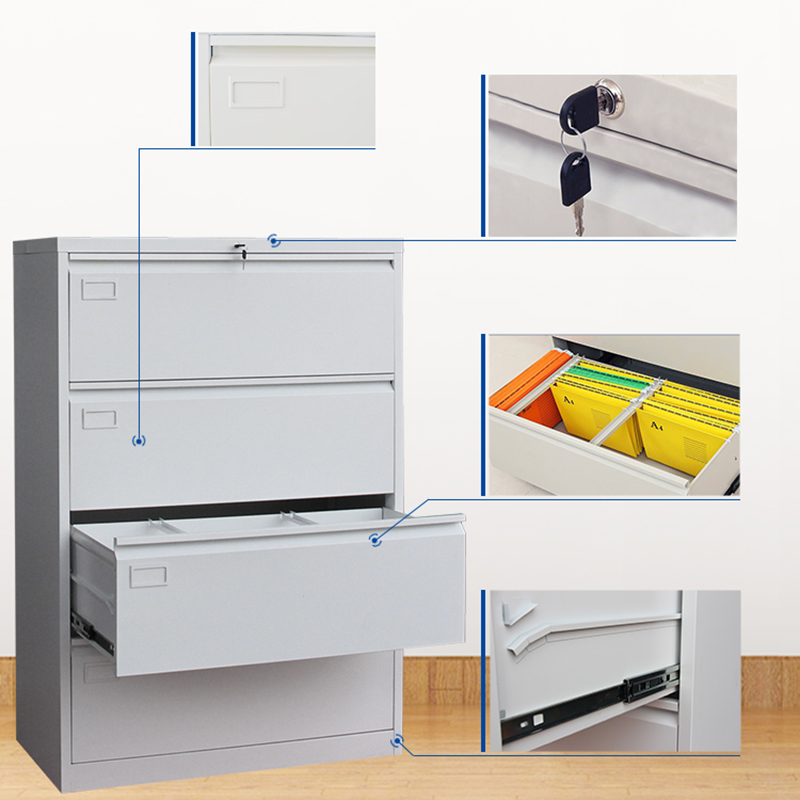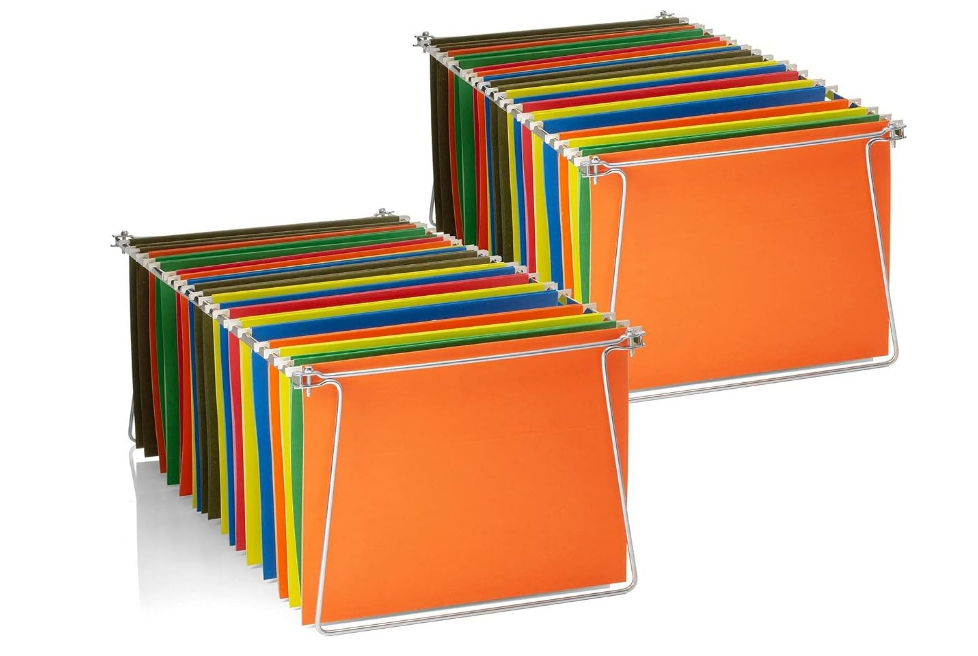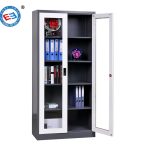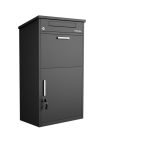Filing cabinets are essential office furniture for storing and organizing files. Most filing cabinets come with one or more pairs of metal rails inside the drawers. These rails help folders slide smoothly and ensure proper placement and movement of folders. However, some models are designed without rails. Don’t worry, this article will explain how to handle this.
Understanding filing cabinet rails
What are filing cabinet rails?
Filing cabinet rails are metal tracks or brackets that support and guide the sliding of folders inside the filing cabinet, allowing folders or hook-type folders to slide and hang smoothly.
In most filing cabinets, rails are metal tracks where folders with hanging tags are placed. Users can access files by the tags without them becoming scattered or stacked.
Filing cabinets without rails may cause folders to stack or loosen, requiring a more creative and flexible approach.

The role of filing cabinet rails:
Guide the Sliding of Folders: Ensure smooth sliding in the drawer, preventing shifting or getting stuck.
Support Folders: The rails support the folders, particularly hook-type folders.
Improve Organization: Rails help organize and arrange folders to prevent random stacking.
Advantages of filing cabinet rails:
Smooth Use Experience: Well-designed rails allow folders to slide smoothly, improving user experience.
Improve Space Utilization: Neatly arranged folders maximize space in the file cabinet.
Increase File Security: Rails help prevent folders from shifting or falling, reducing the risk of damage from improper storage.
Durability: High-quality metal rails are strong and durable, resistant to deformation, and ensure long-term use.
Why don't filing cabinets have rails?
Generally, to save production costs, consumers need to determine whether the product has rails when purchasing, so as not to affect subsequent use. Typically, source manufacturers like Dongzhixin provide customized services and can customize the production of filing cabinets (with/without rails) according to your needs.
How to use a filing cabinet without rails?
To use a filing cabinet without rails, you can try the following methods:
1. Hanging rods
Install a hanging rod on the interior wall of the file cabinet. The hooks of the folders can hang directly on the rod without needing a dedicated track.
Pros: Simple installation, low cost, no complex track system.
Cons: Slightly less smooth, folders may loosen or fall off.
2. Adjustable Dividers
For open-file cabinet designs, use adjustable dividers to create multiple layers within the drawer, helping keep folders or documents organized.
Pros: Customizable space layout, high flexibility, suitable for various file types.
Cons: Folders won't slide, and the partitions must be installed precisely.
3. Buy filing cabinet rails
Purchase the right-sized and cost-effective rails online, then install them according to the provided installation video. Don’t worry, the process is simple.

4. DIY
Make containers using cardboard, label each container for easy identification, and classify your files without rails.
5. Use File Boxes or Trays
Instead of rails, use small file boxes or trays to organize documents within the drawers. These boxes help you group files by category, date, or type. Simply place the boxes or trays neatly inside the drawer, ensuring they fit snugly to avoid shifting when the drawer opens or closes.
FAQ
Q1: What files can be stored in filing cabinets without rails?
Filing cabinets without rails can store various types of documents, including but not limited to:
Ordinary documents (such as contracts, reports, bills, etc.); Folders, file boxes, and file bags; Small items (such as stationery, electronic equipment accessories)…
Any type of document can be stored as long as it can be effectively separated and organized.
Q2: Are filing cabinets without rails cheaper?
Yes. You can use existing household items (such as boxes or trays) instead of rail systems to reduce costs.
Q3: How do you install filing cabinet rails?
To install filing cabinet rails, follow these steps:
Confirm the location: Based on the filing cabinet design, determine where to install the rails. Typically, they are installed on the sides or bottom of the drawer.
Measure the spacing: If the rails are adjustable, ensure the spacing fits the size of the folders you intend to use.
Fix the rails: Use screws or other fixing accessories to securely attach the rails to the filing cabinet, ensuring they can support the weight of the folders and remain stable.
Refer to the manufacturer's instructions for proper installation.
Q4: How do you solve filing cabinet rail problems?
Common rail problems and solutions include:
Rail stuck: Check for foreign objects blocking the rail, clean it, and inspect for damage.
Rail loose or falling off: Check if the fixing screws are loose, tighten or replace the fixing accessories.
Folders not sliding smoothly: Inspect the rails for wear or deformation and replace if necessary.
Q5: Are the filing cabinet rails suitable for all file cabinets?
Not all file cabinets support standard rails. Before purchasing rails, it is best to confirm the type and design of the file cabinet to ensure that the rails are compatible with the file cabinet.
Q6: Do filing cabinet rails require regular maintenance?
Filing cabinet rails need regular maintenance, especially in high-use office environments. Check for looseness, wear, or blockages, and clean and lubricate the rails to extend their lifespan and ensure smooth folder movement.
Q7: How to prevent file confusion?
Use labels and color coding to easily identify different categories of files.
Q8: How to choose a filing cabinet that suits your needs?
Consider the following factors when choosing a filing cabinet:
Storage needs: Determine the size and partitioning based on the number and type of files.
Space constraints: Choose a cabinet size that fits the available space in your office.
Budget: Select a filing cabinet that fits your budget, considering whether additional organizing accessories are needed.





